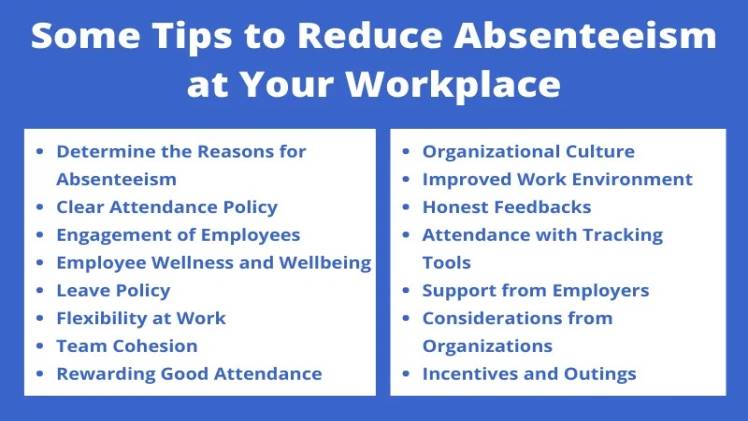Techniques for Modern Workplace Absence Management That Work

Key Takeaways:
- Deep dive into the various factors affecting employee absence and its impact on businesses.
- Analysis of legal requirements and how they shape company absence policies.
- Exploration of technological innovations that aid in absence management.
- Discussion on creating a positive work environment to reduce absenteeism.
- Investigation of the cost implications of employee absence and management benefits.
- Insight into best practices for clear communication and managerial training in absence handling.
- Adjustment of absence management tactics to account for remote workforce challenges.
- Strategies for measuring and refining the success of absence management programs.
Table of Contents
- Absence Management: A Comprehensive Overview
- Identifying the Common Causes of Workplace Absence
- Legal and Policy Framework Surrounding Absence Management
- Technology’s Role in Streamlining Absence Management
- Creating a Supportive Work Environment to Minimize Unplanned Absences
- The Financial Side of Absence Management
- Communication: The Foundation of Absence Management Success
- Training Managers to Handle Absence Effectively
- Addressing the Challenges of Remote Work and Absence Management
- Measuring the Success of Your Absence Management Strategy
Organizations today are continually looking for ways to optimize operations, and one key area of focus is the effective management of employee absences. Navigating the intricacies of absence management is crucial for ensuring a productive and harmonious workplace. Let’s explore some vital strategies that can be employed to manage absence in the modern work environment. These strategies aim to foster a healthy work culture, minimize disruptions due to absences, and maintain legal compliance while striving to optimize employees.
Absence Management: A Comprehensive Overview
Effective absence management begins with a comprehensive understanding of its impact on the organization’s bottom line and workforce morale. Unplanned absences, particularly, can have a domino effect, leading to decreased productivity, strained relations among team members who have to cover absent colleagues, and, in some cases, compromised customer service. A holistic approach to absence management considers policy design, adherence to relevant laws, and the implementation of supportive measures that cater to the business’s and its employees’ needs. At the heart of such an approach is fostering an environment where absences are minimized and effectively managed when they occur.
Identifying the Common Causes of Workplace Absence
A clearer understanding of why employees take time off can inform the creation of more empathetic and flexible absence policies. The reasons for absence range widely, from acute personal or family health issues and long-term medical conditions to time needed for mental health care and family responsibilities. Beyond illness-related absences, other factors such as job dissatisfaction, workplace stress, and burnout can also contribute to employees taking time off. By recognizing these causes, employers can take proactive steps to create a supportive workplace environment that addresses the core issues leading to absence.
Legal and Policy Framework Surrounding Absence Management
Developing an absence management policy requires careful consideration of the legal landscape, which includes an array of federal and state leave laws that protect employees while setting guidelines for employers. The Family and Medical Leave Act (FMLA) is just one example of such legislation mandating protected leave for eligible employees for specific family and medical reasons. Employers must stay updated on legal requirements to craft compliance and fair policies.
Technology’s Role in Streamlining Absence Management
Utilizing advancements in technology can play a pivotal role in simplifying the management of absences. Modern Human Resource Information Systems (HRIS) not only automate the tedious task of tracking employee leave but also integrate seamlessly with other HR functions. These systems foster an analytical approach to absence management, giving employers valuable insights into absence patterns and potential areas for intervention. With these technological tools, businesses can enhance efficiency and better support their workforce’s needs.
Creating a Supportive Work Environment to Minimize Unplanned Absences
Wellness programs that encourage regular exercise, stress reduction techniques, and healthy eating habits may improve overall health and reduce illness-related absences. Such programs also signal to employees that their employer values their health, wellbeing, and loyalty. Ultimately, a supportive environment is a cornerstone in minimizing unplanned absences.
The Financial Side of Absence Management
Unmanaged employee absence can lead to substantial financial setbacks for companies. As noted, absenteeism impacts direct costs, such as paying for overtime or temporary replacements, and results in indirect costs, like decreased productivity and the potential for increased errors from overburdened employees. A proficient absence management system, guided by a sound strategy, can mitigate these costs and result in significant savings for the organization.
Communication: The Foundation of Absence Management Success
Clear, consistent communication is the linchpin of effective absence management. Policies must be communicated to make them easily understandable for all employees, and the procedures for reporting and managing absences should be transparent. Regularly reminding employees of these policies and procedures ensures everyone is on the same page and can lead to smoother operations when absences occur.
Training Managers to Handle Absence Effectively
Frontline managers are often responsible for dealing with the immediate repercussions of employee absences. Thus, equipping them with solid skills in managing these situations is essential. It includes understanding the legal nuances of leave entitlements, maintaining team cohesion during absences, and engaging in supportive discussions with employees about their health and wellbeing. Regular training and updates on best practices can significantly improve wellbeing and the capacity to manage absences successfully.
Addressing the Challenges of Remote Work and Absence Management
The proliferation of remote work has introduced new complexities into absence management. Even when working from home, employees should adhere to absence-reporting procedures to prevent disruptions in workflow. Organizations must ensure that absence policies include remote workers and that managers are attuned to the unique challenges that may arise from a geographically dispersed workforce.
Measuring the Success of Your Absence Management Strategy
A successful absence management strategy should demonstrate its effectiveness through measurable outcomes. Key Performance Indicators (KPIs) such as the rate of unplanned absences, the average duration of absences, and the cost impact of absences on the organization are vital metrics for assessment. Additionally, it’s wise to consult authoritative data sources such as the Bureau of Labor Statistics as benchmarks for comparison to national trends and to help gauge the overall success of your practices. Regular analysis of these metrics, alongside employee feedback, provides the foundations for continual improvement and refinement of strategies.




